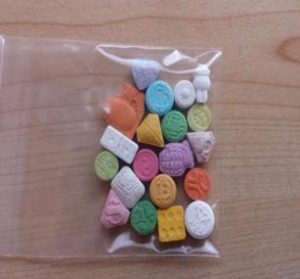New Articles About Ecstasy/ Cheap Ecstasy for sale
New Articles About Ecstasy, Street names include Molly, Ecstasy, X, Superman, and XTC, among many others.
Developed in 1914 as an appetite suppressant, MDMA gained popularity in the 1980s with young adults at large music festivals and all-night dance parties or raves.
The user experiences feelings Trusted Source of euphoria, increased energy, intimacy and emotional warmth, sensitivity to touch, and a distortion of time and of the senses.
Ecstasy is frequently taken with other illegal drugs, and pills sold as MDMA on the street often contain additives. These factors can contribute to serious, and sometimes fatal, health effects.
MDMA can also be addictive, and research suggests that long-term cognitive problems may develop in some users.
A Global Drugs Survey in 2014 found that over 20 percent of American respondents had used MDMA in the previous year.
Another survey published in the same year showed that 1 percent of people aged 19 to 28 years in the United States (U.S.) had used the drug within the last month.
Fast facts on MDMA
Here are some key points about MDMA. More information is in the main article.
MDMA is perceived as a safe party drug, but its effects can be lethal
Tablets sold as pure ecstasy often contain highly toxic additives.
MDMA can interfere with the body’s ability to regulate temperature, and it can raise the heart rate to a dangerous level.
The adverse after-effects of ecstasy can be felt for a week or more.
MDMA (3,4-methylenedioxy-methamphetamine) is a synthetic drug that was used legally in the 1970s for use in psychotherapy treatment, despite a lack of data to support its efficacy.
The nickname “Molly” is short for “molecular.” It often refers toTrusted Source the powder form of the drug, which may be sold in capsules.
A synthetic drug is one manufactured in a laboratory environment rather than coming from a natural source.
The substance then began illegally circulating for recreational use.
In 1985, the Drug Enforcement Administration (DEA) labeled MDMA a Schedule I substance, or a drug with
blood pressure, decreased appetite, and increased energy.
MDMA functions by increasing production of serotonin, dopamine, and norepinephrine.
These are the brain’s neurotransmitters, and they influence mood, sleep, and appetite.
Serotonin also triggers the release of other hormones that can cause feelings of attraction and intimacy. As a result, users may become more affectionate than usual, and feel a connection with complete strangers.
The effects last for 3 to 6 hours, but people who take a moderate amount may experience withdrawal-type side effects for a week after.
These include Trusted Source:
insomnia
confusion, irritability, anxiety, and depression
impulsiveness and aggression
decreased interest in sex
memory and attention problems
reduced appetite
These effects may be due to MDMA alone, or to the combination of MDMA use with other drugs.
Other substances can be mixed with MDMA
Not all the effects are predictable because so-called pure “ecstasy” can contain other unwanted drugs or chemicals. Being illegal, there is no government regulation over production.
As a result, people using MDMA could also unwittingly be using:
ephedrine
ketamine
caffeine
cocaine
methamphetamine
synthetic cathinones such as mephedrone, the psychoactive ingredient in another drug, known as “bath salts.”
These harmful substances can be particularly dangerous when mixed with MDMA. When users buy MDMA from dealers on the street, they do not know what they are taking.
Ingesting other substances, such as marijuana or cocaine, along with MDMA greatly increases the danger of adverse reactions.
Deaths have been linked to some fatal batches of MDMA.
